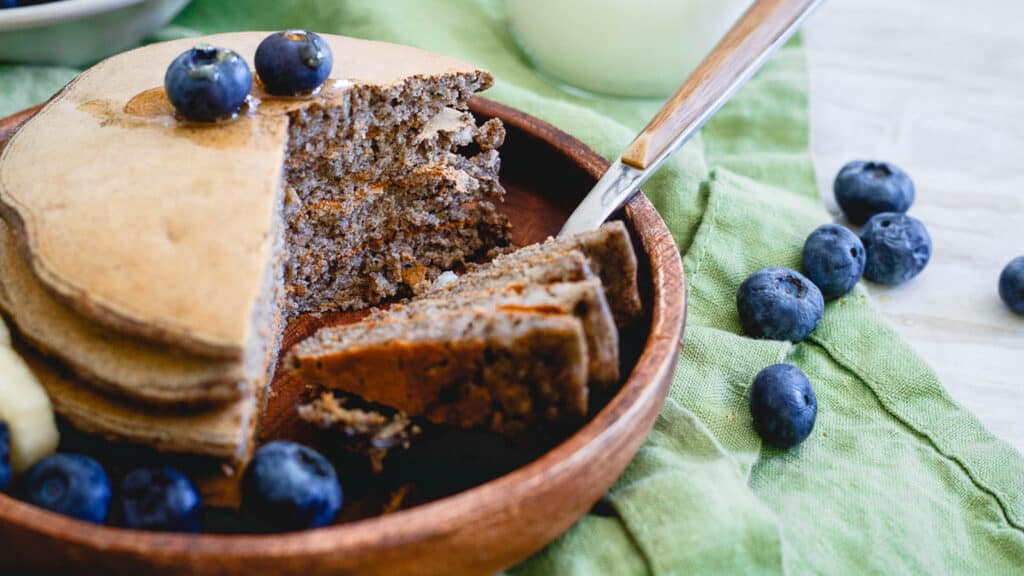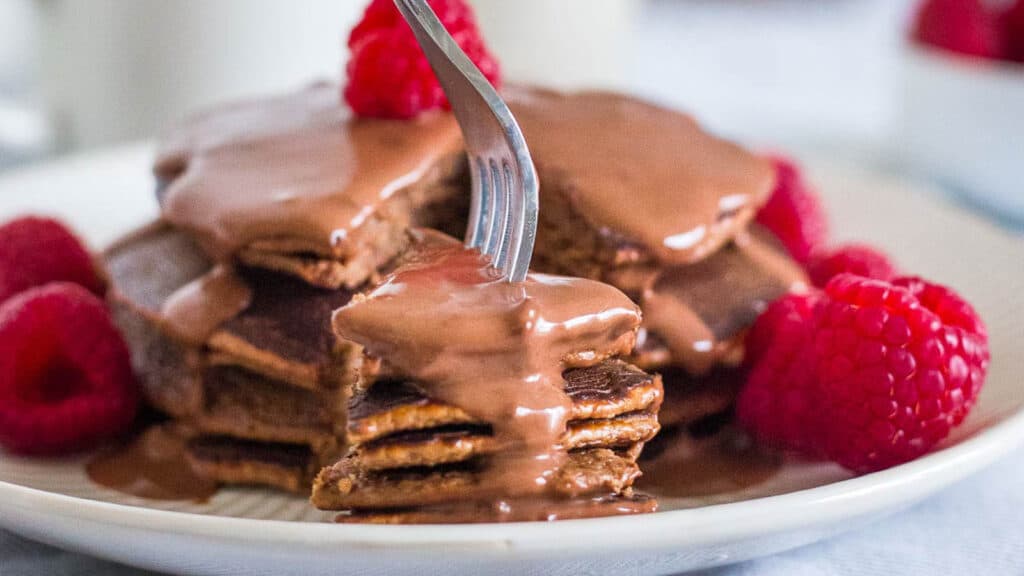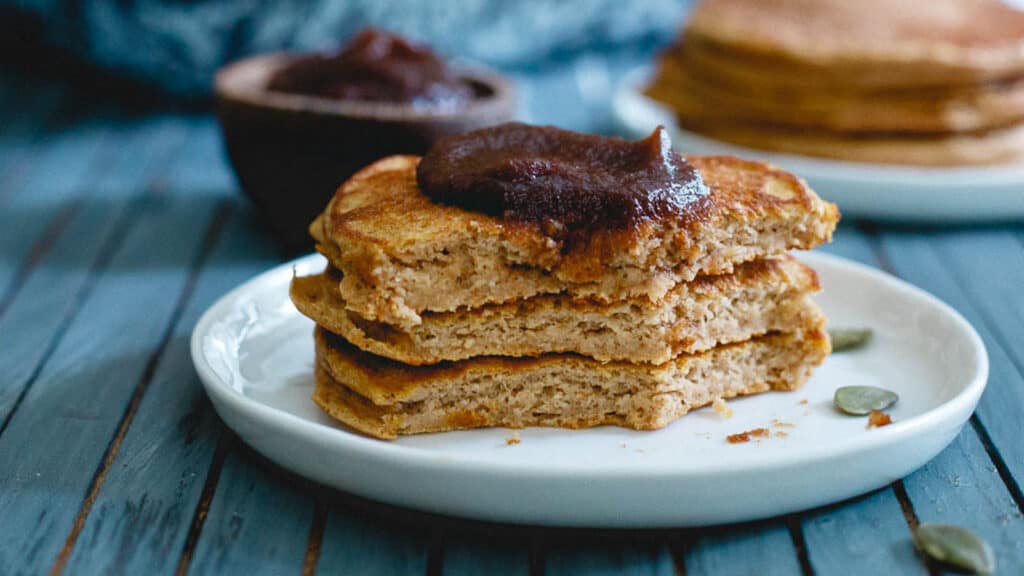Protein pancakes have become popular for those looking to add more nutrition to their breakfast. They offer a great way to enjoy a favorite morning treat while incorporating the essential benefits of protein into your diet. Unlike traditional pancakes, which are often carb-heavy, protein pancakes provide a more balanced meal. Learn about the different types of protein you can use and tips for perfecting the texture and flavor.

How to make protein pancakes
There are two approaches to making protein-packed pancakes. The pancake batter can be made from scratch, or you may use a store-bought pancake mix that you make adjustments to.
Homemade protein pancakes
Making pancakes from scratch allows for the greatest ingredient flexibility and is better suited for those following a specific diet. This approach also allows for the incorporation of whole-food protein sources, such as Greek yogurt or eggs, which can enhance the texture and nutritional profile of the pancakes.
Protein pancakes from a mix
Using a protein pancake mix is a convenient, time-saving option. These mixes typically require just a few additional ingredients, like water or milk, and they ensure consistent results with minimal effort. However, the downside is less control over the ingredients and nutritional content and more limited availability of protein-rich ingredients to make the pancakes.
Ingredients for making protein pancakes
You can incorporate diverse protein-rich options into your pancake batter, from classic choices like protein powder to whole food sources such as cottage cheese and more innovative additions like collagen powder.

Protein powders
Protein powders are a popular and convenient choice for boosting the protein content in pancakes. They come in various forms.
- Whey protein — ̌Derived from milk, whey protein is highly digestible and contains all essential amino acids. Whey protein can create a light and fluffy texture when used in pancakes.
- Casein protein — Also milk-based, casein digests more slowly, providing a prolonged release of amino acids. It’s thicker than whey, which can make the pancakes denser and more filling.
- Plant-based protein — Options like pea, brown rice or hemp protein are great for those following a vegetarian or vegan diet. They tend to be less smooth than animal-based proteins, so they may result in a grittier texture.
- Blended protein — Some powders combine different protein sources to balance absorption rates and amino acid profiles. These blends can offer a middle ground regarding texture and nutritional benefits.
When making protein powder pancakes, it’s important to balance it with other ingredients to avoid dryness. A one-part protein powder ratio to one-part flour — or pancake mix — typically works well.
Adjusting the amount of liquid in the recipe can also help achieve the desired batter consistency. These chocolate protein pancakes offer a simple recipe featuring whey protein powder to achieve a high protein content while maintaining a moist texture.
“Protein pancakes are a staple in our house, and I make them weekly. We make them from scratch and though we do have some protein powder recipes we love, more often than not, we use collagen powder. This is because it blends easier into flour without affecting the amount of liquid, so you can still get that fluffy pancake texture you love.”
— Shelby, Fit as a Mama Bear
Filled with appetizers, salads, sides, mains and desserts, Food Drink Life's cookbook will become your favorite!
- Easy and delicious recipes from a variety of top chefs and recipe developers.
- Bright, colorful pictures on every page.
- Printer-friendly recipes that you can download instantly to your device.
- Printable shopping list and a kitchen conversion sheet.
Greek yogurt
Greek yogurt is an excellent ingredient for adding protein and moisture to pancakes. Its creamy texture and tangy flavor can enhance your pancakes’ overall taste and nutritional value.
Using yogurt in the pancake recipe omits the need for oil in a 1-to-1 ratio. This approach works whether making the pancakes from scratch or doctoring up a store-bought mix. It’s important to choose whole milk Greek yogurt, not a low-fat option, as the fat is needed to replace the oil. Without it, the pancakes may have a gummy texture. Using a

Cottage cheese
Cottage cheese is a surprisingly effective ingredient for making protein-rich pancakes. While cottage cheese has a lumpy texture on its own, when blended into pancake batter, it contributes to a creamy and rich consistency. This ingredient is packed with protein, especially casein, the slow-digesting protein that keeps you feeling full and satisfied.
The subtle, slightly tangy flavor of cottage cheese doesn’t overpower the pancakes. This makes it a versatile ingredient that pairs well with various flavors, from classic maple syrup to fresh fruits or savory toppings. It’s the main ingredient in this protein pancake recipe, resulting in over 20 grams of protein per serving.
Collagen
Collagen is a protein known primarily for its health benefits for skin, hair, nails and joints. However, it can also be a valuable addition to protein pancakes. One of the key advantages of using collagen is that it’s flavorless and dissolves easily.
Collagen powder mixes well with other dry ingredients, making it easy to add to your pancake batter. Unlike some other protein powders, it doesn’t create a gritty texture or impact the moisture balance of the pancakes.
As collagen is not a complete protein, combining it with other protein sources, such as eggs or egg whites, like in this pumpkin protein pancake recipe, can provide a more balanced amino acid profile.
“I love adding collagen peptides to pancakes to add in some extra protein. I’ll also add some walnuts or pecans to pancakes for extra protein!”
— Gena Lazcano, Ginger Casa
The last bite
Incorporating protein into your pancake breakfast is an innovative and tasty way to enhance your morning routine. Whether you opt for protein powders, Greek yogurt, cottage cheese or collagen, each option adds unique nutritional benefits and flavors to this breakfast staple. You can also just stick to the basics and use egg whites and higher-protein flours, such as oat flour, like Brooke from Minimalist Mama does.
The great thing about protein pancakes is their adaptability — they can suit a variety of dietary needs and flavor preferences. Experimentation is key in finding your perfect protein pancake recipe. Feel free to adjust ingredients, experiment with different flavors and discover what works best.
Gina Matsoukas is the writer, photographer and recipe creator of Running to the Kitchen. Focusing on healthy, seasonal, whole-food recipes, her work has been featured in various online and print publications including Food Network, Prevention Magazine and Women’s Health. Gina lives in central New York, where she enjoys an active outdoor life.
